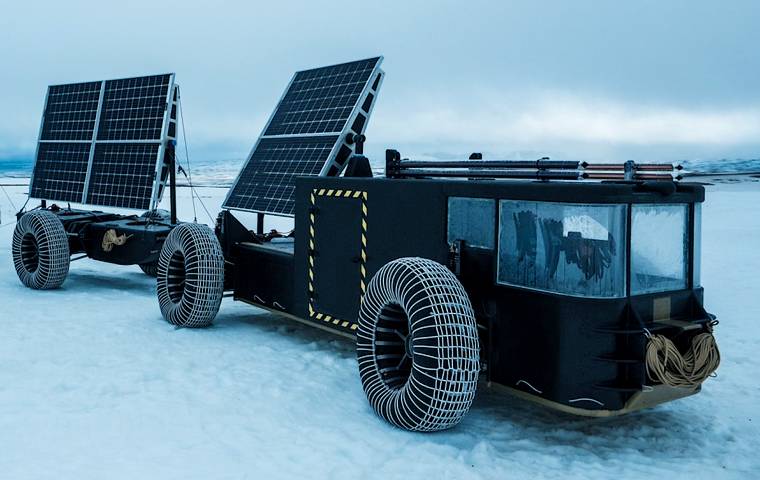 Towing your own power supply avoids fossil fuels and is a sound approach in isolated areas.
Towing your own power supply avoids fossil fuels and is a sound approach in isolated areas.
The Antarctic is the least polluted place on earth, an ecological frontier we should preserve. To highlight this, an expedition intends to cross the continent in an unusual vehicle.
The Solar Voyager is created with the environment in mind, powered by the sun and built from recylcled materials. An army of volunteers has gathered unwanted plastics from street skips, or waste bins.
Ground down for a 3D printer, the plastic is turned into small, hexagonal building blocks. The strength and flexibility of a beehive borrowed from nature, to create transport which is light and well insulated.
Real World Testing
Only so much can be achieved in a workshop. Time to test and improve in similar conditions, before taking people to a remote place with extreme cold.
The team chose Iceland and needed to transport a long list of equipment. Their prized vehicle about to try genuine snow, rock formations and glaciers, after meeting the legal requirements of an international journey.
An ATA Carnet came to the rescue, covering all they required, facilitating easy passage in and out of Iceland. The straightforward part of a trip which would offer vital information.
To stand up to driving winds, the solar cell trailers would require adjustment, on board electronics needed tweaking and improved insulation. Their trial had produced sound insight to assist the coming journey.
Approaching The Goal
With over 5 million square miles of icy wilderness, Antarctica represents a challenge for anyone. The Solar Voyager is due to arrive in December 2018.
We wish them well and once again, an ATA carnet is available to assist. If they travel to Antarctica via a member country such as New Zealand, a carnet can be used for the entire journey.
More importantly, they will bring notice to a need we all share. With only one planet to live on, preserving the gifts nature has given us matters.
